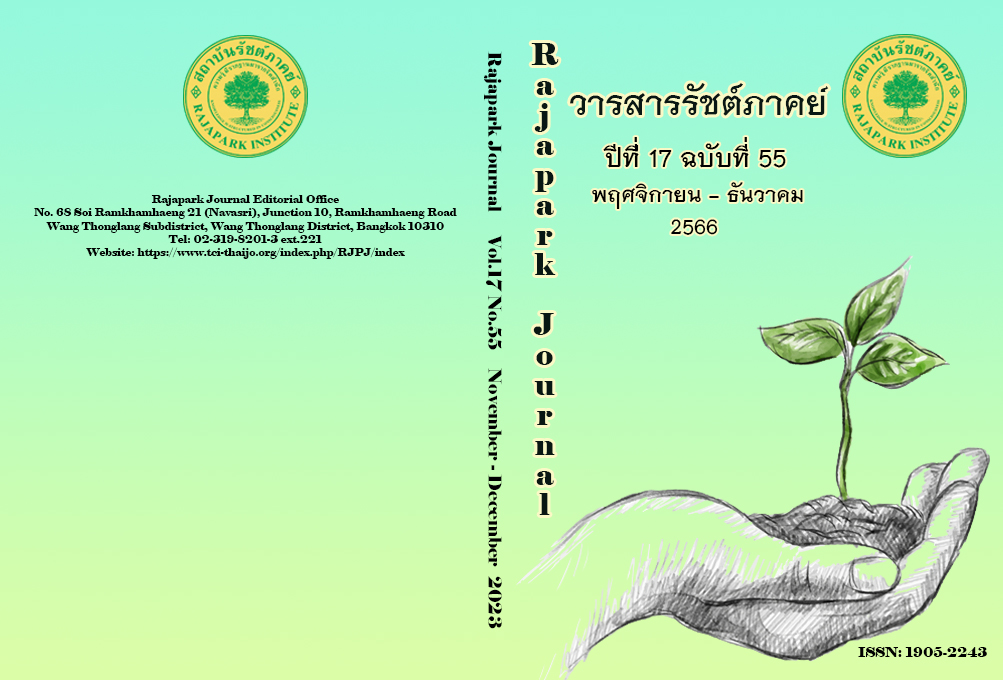Development of Life Skills in Digital of Student Teachers in Rajabhat University: Mixed Methods Research
Main Article Content
Abstract
The objectives of this research were 1) to study the components and indicators of life skills in the digital of student teachers at Rajabhat University; and 2) to develop and verify the quality of life skills assessment in the digital. This research was mixed-methods research. The sample consisted of 840 four-year student teachers studying in the first semester of the academic year 2022 in the Faculty of Education, Rajabhat University. The sample was obtained by multistage random sampling. The instrument used for data collection was a life skill in the digital age. Data were analyzed using statistics to determine the mean, standard deviation, correlation coefficient, confirmatory factor analysis, and content analysis. The findings indicated that 1) components and indicators of life skills in the digital age for Rajabhat University student teachers consisted of 4 components: 1.1 Decision-making and problem-solving skills using critical thinking; 1.2 Emotional and stress management skills; 1.3 Self-awareness skills; and 1.4 Information, media, and technology skills. 2) The developed model for measuring life skills in the digital age for the Rajabhat University student teachers was consistent with empirical data as reflected by the parameters as follows: 2 = 15.28, df = 31, p = 0.99,
2/ df = 0.49, RMSER = 0.00, RMR = 0.02, GIF = 0.99, AGIF = 0.99.
Article Details

This work is licensed under a Creative Commons Attribution-NonCommercial-NoDerivatives 4.0 International License.
Views and opinions appearing in the Journal it is the responsibility of the author of the article, and does not constitute the view and responsibility of the editorial team.
References
Creswell, J. W., Plano Clark, V. L., & Vick, L. (2011). Designing and conducting mixed methods research (2nd ed.). SAGE.
Daniel, L. G. (1989). Comparisons of Exploratory and Confirmatory Factor Analysis. In Peper Presented at the Annual Meeting of the Mid-South Educational Research Association, Little Rock, 8-10 November 1989. https://www.academia.edu/69417181/Comparisons_of_exploratory_and_confirmatory_factor_analysis
Duangwiset, B. (2016). The development of a teaching model emphasizing to promote life skills for teacher students of Rajabhat University[Doctoral dissertation, Naresuan University].
Forum, W. E. (2016). Fostering social and emotional learning through technology. Cenveo.
Gagne, P., & Hancock, G. R. (2006). Measurement model quality, sample size, and solution propriety in confirmatory factor models. Multivariate Behavioral Research, 41(1), 65-83. DOI:10.1207/s15327906mbr4101_5
Joreskog, K. G., & Sorbom, D. (1996). Lisrel 8: Structural equation modeling with the SIMPLIS command language. Scientific Software International.
Office of Academic and Educational Standards. (2011). Guidelines for developing life skills, integrating teaching and learning in 8 groups of learning subjects. Agricultural Cooperative Assembly Printing House, Thailand.
Panich, W. (2012). The approach to creating learning for students in the 21st century. Sodsri-Saritwong Foundation.
Panich, W. (2012). Ways of creating learning for students in the 21st century. Sodsri-Saritwong Foundation.
Prasertsin, A. (2014). Integrated appraisal research in the collection of methodology and theory articles for behavioral research in organizations. Thai Samphan Printing House.
Samutvanich, C. (2017). Enjoy to know. Vajiravudh College.
Tirakanan, S. (2012). Multivariate analysis in social science research. Chulalongkorn University.
World Health Organization. (1994). Life skill education in schools. World Health Organization.
World Health Organization. (1999). Life skill education for children and adolescents in school. World Health Organization.


